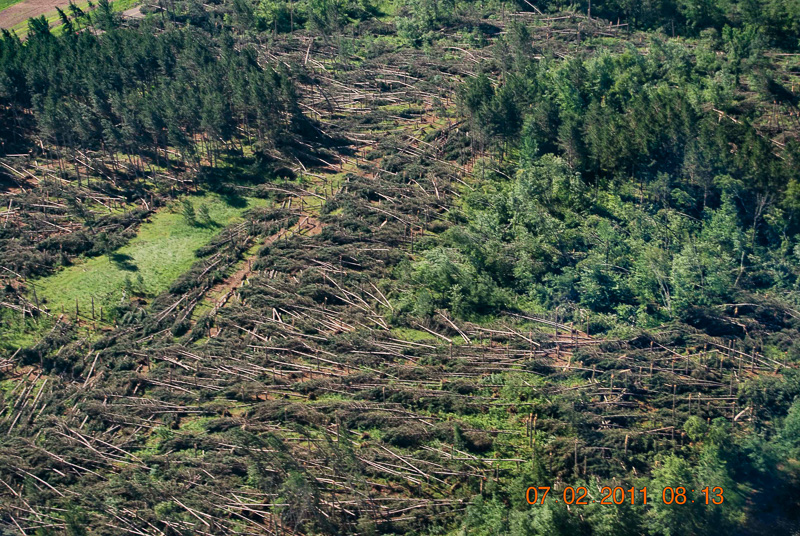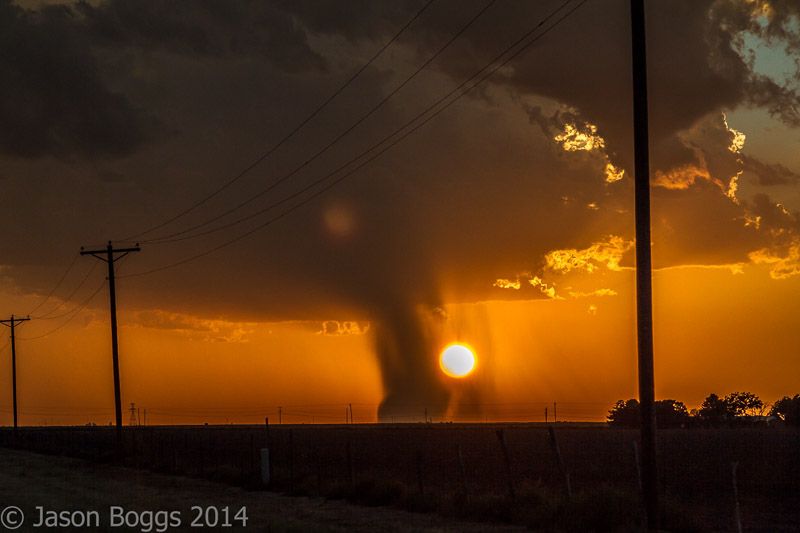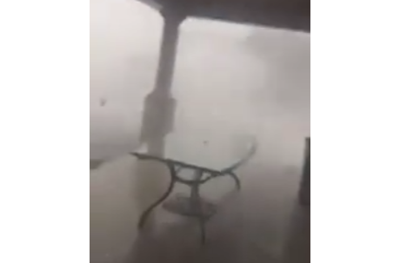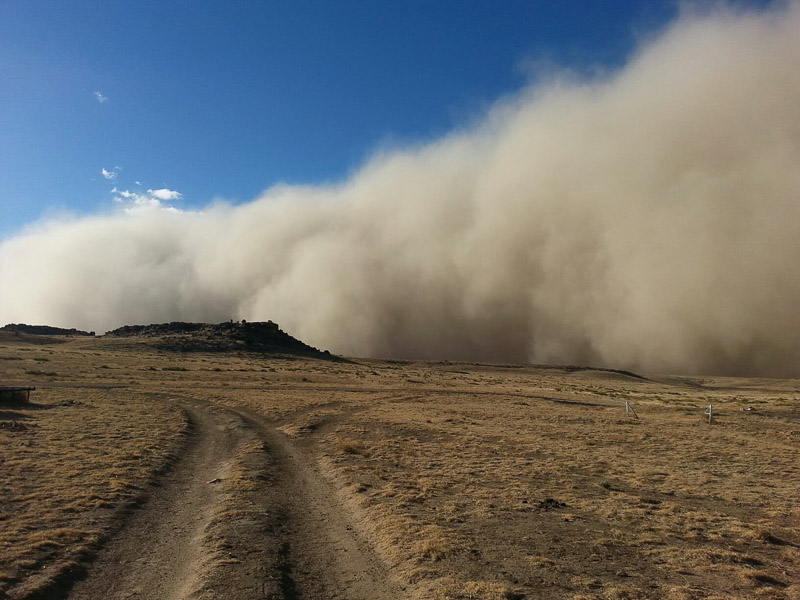At first glance, one might think this is video from inside a tornado because the winds are so strong. Samantha Martinez shot the video earlier this week in Monte Alto, Texas. Notice the winds never change direction so clearly we can rule out the tornado theory. It honestly looks like footage from a hurricane, but we know that's not the case either. So what happened? Powerful storms likely caused a downburst which is the general term for all localized strong wind events that are caused by a strong downdraft within a thunderstorm. To visualize this process, imagine the way water comes out of a faucet and hits the bottom of a sink. The column of water is the downdraft and the outward spray at the bottom of the sink resemble the straight-line winds. It should serve as a reminder to respect ALL warnings, both tornado and severe...
Types of Damaging Winds
Straight-line wind is a term used to define any thunderstorm wind that is not associated with rotation, and is used mainly to differentiate from tornadic winds.
A downdraft is a small-scale column of air that rapidly sinks toward the ground.
A macroburst is an outward burst of strong winds at or near the surface with horizontal dimensions larger than 4 km (2.5 mi) and occurs when a strong downdraft reaches the surface. Macroburst winds may begin over a smaller area and then spread out over a wider area, sometimes producing damage similar to a tornado. Although usually associated with thunderstorms, macrobursts can occur with showers too weak to produce thunder.

Stacy Hopke/Burnett County Sheriff's Department / A macroburst is an outward burst of strong winds at or near the surface with horizontal dimensions larger than 4 km (2.5 mi) and occurs when a strong downdraft reaches the surface. These trees were felled by straight-line winds in Minnesota in 2011.
A microburst is a small concentrated downburst that produces an outward burst of strong winds at or near the surface. Microbursts are small — less than 4 km across — and short-lived, lasting only five to 10 minutes, with maximum windspeeds sometimes exceeding 100 mph. There are two kinds of microbursts: wet and dry. A wet microburst is accompanied by heavy precipitation at the surface. Dry microbursts, common in places like the high plains and the intermountain west, occur with little or no precipitation reaching the ground.

Jason Boggs /A microburst is a small concentrated downburst that produces an outward burst of strong winds at the surface. Microbursts are generally small and short-lived.
A downburst is the general term used to broadly describe macro and microbursts. Downburst is the general term for all localized strong wind events that are caused by a strong downdraft within a thunderstorm, while microburst simply refers to an especially small downburst that is less than 4 km across.
A gust front is the leading edge of rain-cooled air that clashes with warmer thunderstorm inflow. Gust fronts are characterized by a wind shift, temperature drop, and gusty winds out ahead of a thunderstorm. Sometimes the winds push up air above them, forming a shelf cloud or detached roll cloud.
A derecho is a widespread, long-lived wind storm that is associated with a band of rapidly moving showers or thunderstorms. A typical derecho consists of numerous microbursts, downbursts, and downburst clusters. By definition, if the wind damage swath extends more than 240 miles (about 400 kilometers) and includes wind gusts of at least 58 mph (93 km/h) or greater along most of its length, then the event may be classified as a derecho.
A haboob is a wall of dust that is pushed out along the ground from a thunderstorm downdraft at high speeds.












